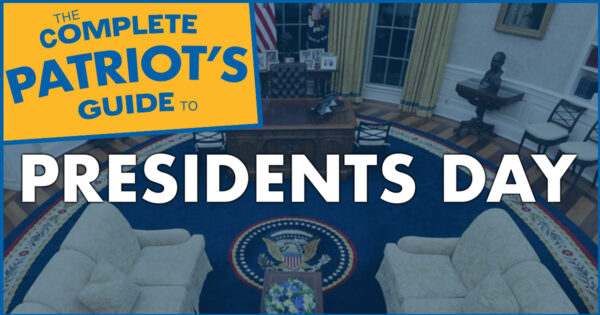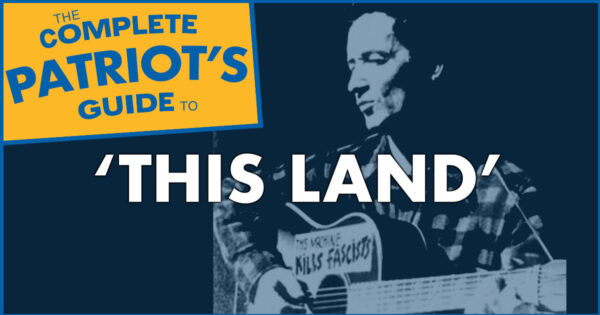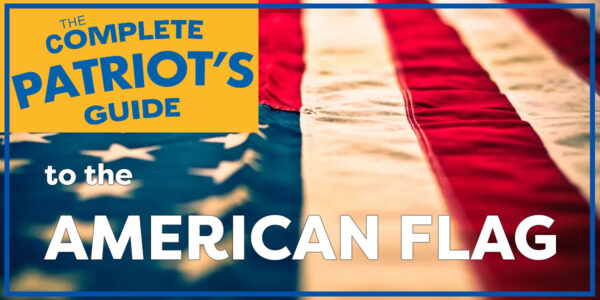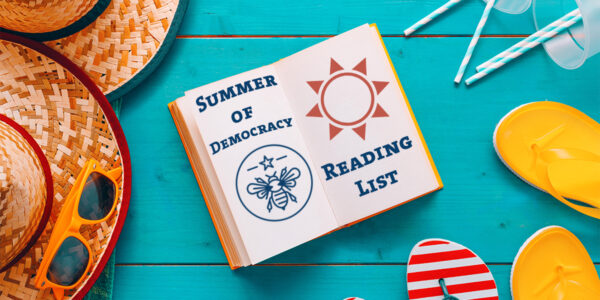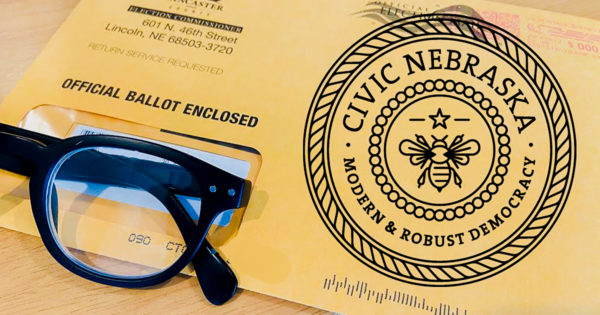Happy Fourth of July! Of all our national holidays, Independence Day encourages us all to wear our American hearts on our sleeves. If it were a U.S. city, July 4 would be Las Vegas – crowded parties on every block, spectacles and blinding lights, all-you-can-eat buffets, and that distinctly American distaste for authority. In the 246 years since that gregarious group in Philadelphia officially called out the king for his bad behavior, Independence Day has been a yearly reminder of the origins of our nation. Come along, patriots, as we take a closer look at our country’s big day and the forces behind it.
Early holidays in American life
Before America was AMERICA in all caps, colonists celebrated all kinds of holidays. Given that most of their ancestors had come to North America to freely practice their various faiths, most observances on the colonial calendar were religious in nature. But there were other traditions, too: We’re particular fans of St. Blaise’s Day (Feb. 3), when early American women set aside their housework and – paraphrasing the latter-day saint Cyndi Lauper here – just went out to have fun. Per tradition, women roamed through their villages, knocking on neighbors’ doors in search of housewives who might be spinning thread. If they found anyone, they’d then set fire to the flax or wool on the spindle. ALL HAIL SAINT BLAZE! This was quite likely the first holiday in which Americans annoyed their neighbors by lighting things on fire – but as we’ll see, certainly not the last.
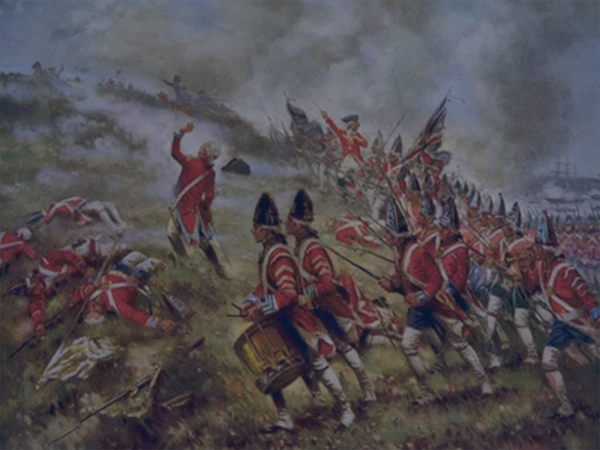
Arguably, the first “national holiday” that Americans celebrated together occurred a few weeks before the publishing of the Declaration of Independence. On June 17, 1776, Americans commemorated the one-year anniversary of the Battle of Bunker Hill. As the first major battle of the Revolutionary War, it’s officially chalked up as a win for the Redcoats. Despite the loss, though, the colonial forces inflicted significant casualties against the British, prompting English Gen. Henry Clinton’s famously Phyrric evaluation: “A few more such victories would have shortly put an end to British dominion in America.”
The anniversary of the Battle of Bunker Hill was celebrated as early as the next year (and is still celebrated every June 17 in Massachusetts). People throughout the colonies celebrated with the people of Massachusetts because colonists up and down the continent had fought at Bunker Hill.
You say you want a resolution
Ten days before the first Bunker Hill Day, Richard Henry Lee of Virginia introduced a resolution in the Second Continental Congress. It read, in part, that the united colonies “are, and of right ought to be, free and independent states.” Lee’s resolution had three parts: declaring independence from Mother England, calling for alliances with other nations, and “preparing and digesting the form of a confederation.”
This in and of itself was astonishing, given how delegates to Congress were not necessarily wild-eyed revolutionaries when they first came to Philadelphia just one year earlier. But in that time, King George III became, shall we say, a terse pen pal with his colonies, and eventually, most of the delegates abandoned hope of reconciliation with Great Britain. By June ’76, it was clear that if a vote occurred to make the break, a majority of delegates would say yes.
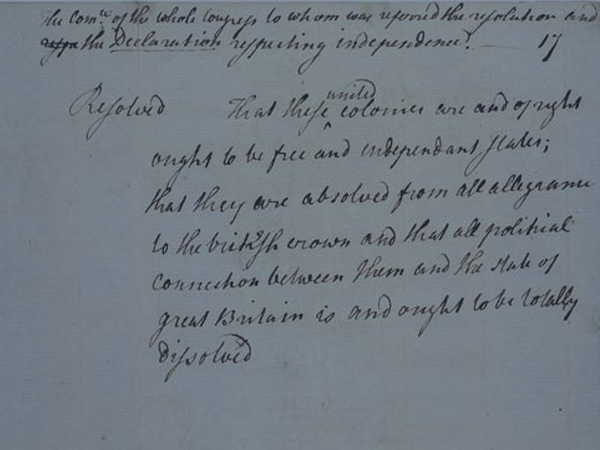
Still, members of Congress were worried the Lee Resolution was too much, too fast. So they did what politicians remain very good at doing today – they passed the buck to their constituents and colleagues back home. This gave them time to hedge their bets until they could get a sense of which way the wind was blowing on independence. And if necessary, they could then muster enough opposition to propose a last-ditch effort to make peace with Britain.
Meanwhile, the chief advocates in Congress for breaking away, including Massachusetts’ John Adams, knew that a simple majority wasn’t enough; it had to be unanimous to send a signal around the world of American unity. They needed all 13 clocks to strike at once, as Adams wrote.
Given the multiple uncertainties, approval of the Lee Resolution was deferred until July 2. That’s when Adams, along with Benjamin Franklin, Philip Livingston, Roger Sherman, and a 33-year-old junior delegate from Virginia, Thomas Jefferson, formed a committee to craft a “declaration of independency” while they shored up support in Congress.
That committee would produce one of the most powerful and pivotal documents in the history of the world.
A first draft of history
Decades after the fact, Adams asserted he had persuaded Jefferson to write the draft Declaration because the Virginian was well-liked in Congress and possessed the “best pen” – that is, he was the most skillful writer. Working in the summer heat in a rented room near the Pennsylvania State House, Jefferson hammered out his first draft in just a few days.
He divided it into three parts: the preamble, which over the centuries has become a clarion call for oppressed peoples around the globe, but at the time was largely ignored; the list of indignities that King George had shamelessly brought upon the colonies; and then – finally – the kicker to beat all kickers, the actual announcement that all political connections between Great Britain and the American “free and independent states” should be dissolved forever.
We like to believe that Jefferson’s pen was divinely guided, with each word made manifest by the twin hands of freedom and fate. In reality, Jefferson was swimming in the mainstream of American thought at the time. Many of the Founders were students of Enlightenment political philosophers such as John Locke, who championed the notion that everyone has inherent human rights. And just earlier that year, George Mason drafted the Virginia Declaration of Rights, which invokes the inherent human right of “enjoyment of life and liberty, the means of acquiring, possessing and protecting property, and pursuing and obtaining happiness and safety.”

Remember, friends: The Declaration of Independence wasn’t a legal document. It was, in essence, an advertisement written to sell a rebellion by an independent coalition of states for the long haul. So when Jefferson wrote its preamble, he knew his top priority was to stir continental spirit toward unity and vigilance. He wrapped Mason’s sentiments about natural rights in slightly more eloquent language, and out came:
When in the course of human events it becomes necessary for a people to advance from that subordination in which they have hitherto remained, & to assume among the powers of the earth the equal & independant station to which the laws of nature & of nature’s god entitle them, a decent respect to the opinions of mankind requires that they should declare the causes which impel them to the change.
We hold these truths to be sacred & undeniable; that all men are created equal & independant, that from that equal creation they derive rights inherent & inalienable, among which are the preservation of life, & liberty, & the pursuit of happiness; that to secure these ends, governments are instituted among men, deriving their just powers from the consent of the governed; that whenever any form of government shall become destructive of these ends, it is the right of the people to alter or to abolish it, & to institute new government, laying it’s foundation on such principles & organising it’s powers in such form, as to them shall seem most likely to effect their safety & happiness.
This was quite audacious in and of itself, even without considering that over the course of his lifetime, Jefferson enslaved more than 600 of his fellow human beings and his only reference to non-whites in the Declaration was of the “merciless Indian Savages” living on the frontier.
In the next two and a half centuries, Americans of all genders, cultures, backgrounds, and stations have called the Declaration’s bluff in the pursuit of true equality. We once called it “an alarm bell, set to ring, perpetually, throughout the future history of a country that was just then coming to be.”
What’s in a date?
So when exactly did 13 former British colonies throw off England’s yoke and become the United States of America? For centuries, July 4 has been recognized as Independence Day, owing to the date written on the Declaration of Independence. Officially, independence was declared when the Continental Congress voted 12-0-1 in favor of the Lee Resolution (New York’s delegation, which was staring down a fleet of British warships and had yet to receive instructions from its constituent assembly, respectfully abstained). The thing is, they did it on July 2, 1776. Adams noted the significance of the date in a letter home: “The Second Day of July 1776, will be the most memorable Epocha, in the History of America,” he wrote.
What Adams hadn’t counted on, of course, was that Congress would need some time to chew on the Declaration’s final wording. By July 4, the edits – 86 in all – were finalized, and off it went to local printer John Dunlap. Maybe 200 copies of the so-called Dunlap Broadside were cranked out with the big ol’ words “IN CONGRESS, July 4, 1776” at the top, and sent out across the land.
The 14-month-old Revolution, until then mainly a series of limited land battles in New England, was on like Donkey Kong.
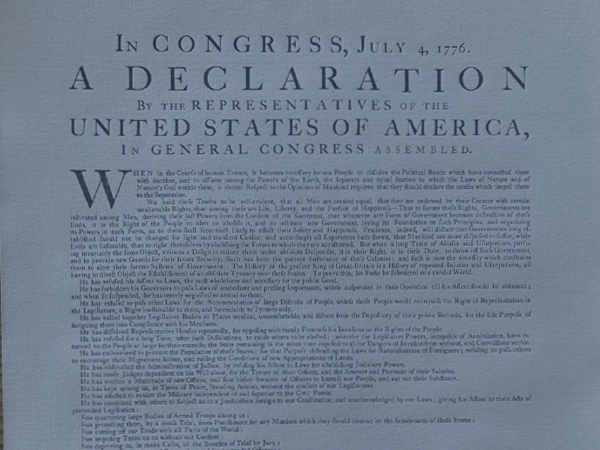
But what was the early consensus on the date of independence – July 2? July 4? Some other date? At the time, it really wasn’t all that big of a deal. The first newspaper to publish the Declaration, the Pennsylvania Evening Post, did so on July 6; it was first read publicly in Philadelphia on July 8; New York finally came around and voted Aye on July 9, the same day Gen. George Washington had the Declaration read to the Continental Army to buoy their spirits; British newspapers got ahold of it by mid-August; and because of a shipping snafu, copies didn’t make it to France until November.
And, notably, it wasn’t signed until Aug. 2, 1776, with the names of the signers remaining unpublished until early ’77 (after the Americans won battles at Trenton and Princeton and it was clear that the War for Independence wasn’t going to end in a swift British victory). It’s not that the Founders weren’t aware of the historic significance of their work; they were just awfully busy at the time prosecuting a war, wooing European allies, and trying to keep 13 newly minted nation-states’ poop in a group.
It’s unclear how much discussion there was about the “official” Independence Day back then. In American Scripture: Making the Declaration of Independence, Pauline Maier mentions by the summer of 1777, no one in Congress had made mention of the pending one-year anniversary of independence. Members did eventually bring it up – on July 3, 1777 – and, given that they’d missed the first relevant date to celebrate, arranged festivities in Philly for the next day. From that point on, July 4 seemed to make the most sense to celebrate Independence Day.
If it makes you happy, it can’t be that bad
Jefferson and crew enshrined “life, liberty, and the pursuit of happiness” as basic rights in the Declaration. In crafting the phrase, the drafters again echoed Locke, whose own writings advocated for “life, liberty, and property.” Does this mean that the Declaration’s vision of happiness simply meant making bank and being safe, or was there more to his phraseology? The modern American interpretation of “happiness” might suggest so; there’s even a rags-to-riches Will Smith movie that carries that wealth-equals-joy message. And trust me, you do not want to cross Will Smith.
Yet, we know that in addition to being heavily influenced by the Enlightenment philosophers, Jefferson also reached back to ancient Greece – he later wrote to a colleague, “I am an Epicurean,” suggesting the teachings of Epicurus (341-270 BC) also guided his pen.
That brings our Declaration’s third “unalienable” right into a much different light than a simple, brazen call to chase earthly wealth. On the contrary, Epicureans believed the greatest good was to seek modest pleasures, to achieve tranquility and freedom from fear, and seek freedom from bodily pain. In short, Epicurus preached the simple life and rejects over-indulging.
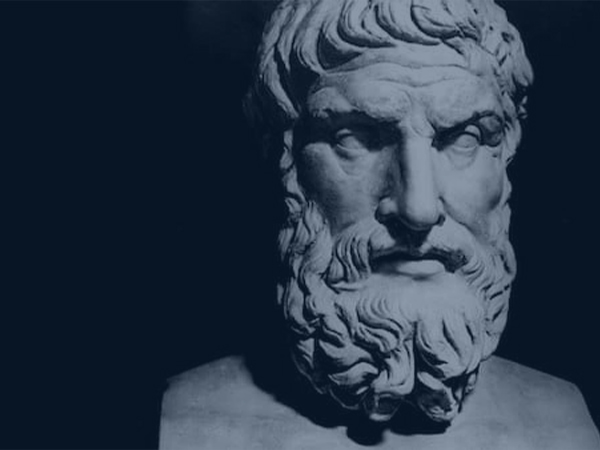
Anyway, it’s something to think about when watching the daily fluctuations of the Dow Jones Industrial Average. Or, perhaps, The Pursuit of Happyness, which is not the Will Smith movie you thought you’d read about in an essay about Independence Day, but here we are.
Let me stand next to your fire
Booms and bombs have been synonymous with Independence Day since the first years of the Revolution. Shortly after the vote on the Lee Resolution, Adams foresaw a boisterous holiday evermore. “I am apt to believe that it will be celebrated, by succeeding Generations, as the great anniversary Festival … it ought to be solemnized with Pomp and Parade, with [Shows], Games, Sports, Guns, Bells, Bonfires and Illuminations from one End of this Continent to the other from this Time forward forever more.”
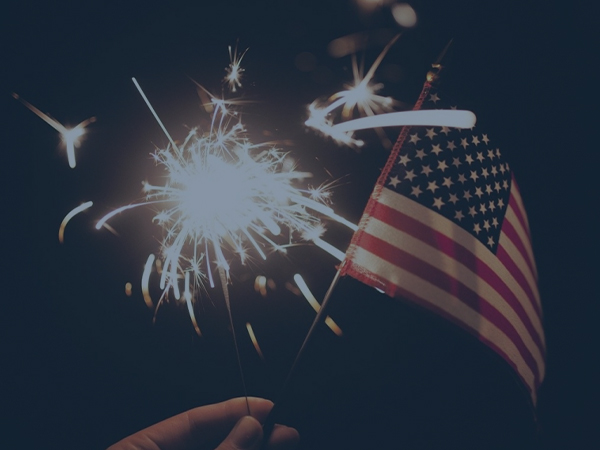
Those first July Fourths after 1776 certainly were commemorated with “demonstrations of joy and festivity” in Philadelphia. In 1777, the Evening Post reported red, white and blue streamers, cannon fire, a massive feast, and the day’s revelries concluding with the ringing of bells and then “a grand exhibition of fireworks.” Other parts of the country, including Boston, added picnics, parades, and speeches before lighting up the night sky.
After the war, Americans continued to celebrate independence each July 4, which didn’t escape the notice of the United States’ new political leaders. By the 1890s, both the Federalists and the Democratic-Republicans leveraged the date to foster unity and fellowship, and to solidify their respective claims to the oft-cited “Spirit of ’76.” The parties would try to outdo one another with separate celebrations in cities around the nation for several years of the early Republic.
Following another dust-up with the British in 1812 – and the fading away of the Federalists – fireworks became more widely available around America (and therefore less political), and they assumed a central space in Americans’ Independence Day celebrations. This turned out to be a wise move by municipal leaders around the country; you could never be sure what one might hit when firing cannons or rifles into the air at night. What goes up must come down, after all.
Speaking of which, the early celebrations of Independence Day blissfully ignored America’s original sin of slavery and happily celebrated the biggest double standard in the history of mankind. Frederick Douglass called BS on July 4 in 1852 in his famous address in his hometown of Rochester, NY, using the occasion not to celebrate the nation’s triumphs but to remind all of its continuing enslavement of millions of people.
An alt-Fourth
Fast-forwarding to modern Independence Days, it’s commonplace for Americans to gather in backyards and driveways and rooftops, grilling meat and emptying their coolers, festooned in star-spangled tank tops and trying to avoid the burn unit at the local emergency room. In recent years, however, more “alternative” celebrations have begun to take root for the more reflective commemoration of our nation’s birth.
Some folks have taken to volunteering, in the spirit of the “we’re all better off if we’re all better off” mutual aid that the colonists practiced. Others commit to registering others to vote, read “civic scriptures,” watch their favorite depiction of the era of the Founding, or bring groups of friends and family together to reflect on our nation’s founding creed of equality.
This long weekend, there’s plenty of time for loud and boisterous displays of patriotism, but also the quiet, reflective kind. We recently put together a short list of videos, readings, and gatherings to “do the Fourth differently” this year. That includes a special pre-recorded Civic Saturday and “gathering guide” from our friends at Citizen University, and a list of great virtual and in-person activities from Made By Us to finish up the Civic Season. We hope you resolve to check out as many of them as you can.
Enjoy the Independence Day weekend!
![]()
